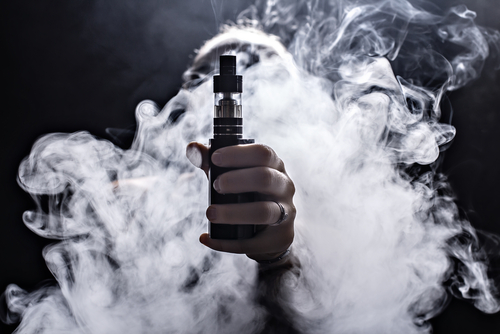According to the Centers for Disease Control and Prevention (CDC), it is not safe for children to vape.
Why It Is Not Safe for Children to Vape
Marketing strategies from JUUL Labs and other e-cigarette companies spread the message that vaping was a safe activity. They bombarded social media outlets with attractive teens happily vaping their variously flavored e-cigarettes in fashionable devices. Young viewers—always hungry for the latest trend—ate the message up, never knowing the dangers they consumed with every breath.
Nicotine Use and Addiction
From the U.S. Food and Drug Administration (FDA), the agency talks of the inherent dangers of teens’ use of e-cigarettes. Because their brains are not fully developed, these young users fall especially vulnerable to becoming addicted to nicotine—with possibly permanent changes to their brains.
A 2016 report released by the U.S. Department of Health and Human Services (HHS) and the CDC revealed that nicotine negatively affects portions of the brain the regulate learning, impulse control, attention, and mood. The report also states that when adolescents use nicotine, they suffer an increased risk of addiction to other drugs in the future.
In 2018, the National Academy of Medicine released its findings that vaping increases the frequency and amount of their smoking later in life. In December of that same year, Health and Human Services (HHS) Secretary Alex Azar announced in a public statement that “Combustible cigarettes remain the leading cause of preventable death in the United States, and … we cannot allow e-cigarettes to become an on-ramp to nicotine addiction for younger Americans.”
Aerosol Dangers
Contrary to what many e-cigarette users believe, the aerosol used in these devices is not water vapor. Rather, it contains several harmful ingredients, including carcinogenic chemicals; ultrafine particles inhaled into the user’s lungs; flavorants like diacetyl, which has been linked to serious lung disease; nickel, lead, tin, and other heavy metals; volatile organic compounds; and, of course, nicotine. Even e-cigarettes that boast of zero-percent nicotine were found to contain this addictive substance.
Other Risks of Vaping
Vaping introduces other risks besides nicotine addiction. Some youths use e-cigarettes to consume other harmful substances, including marijuana. The research reported by the CDC showed that around 30 percent of middle- and high-school aged kids have ingested this drug using their vaping devices.
In some cases, vaping devices with defective batteries have ignited, causing explosions and fires—some of which caused serious injuries.
Finally, the vaping liquid can cause poisoning when breathed, swallowed, or even absorbed through the eyes or skin. The CDC reports that 50 percent of e-cigarette-related calls to poison control centers report poisoning in children who are five years old or younger.
How Big Is the Vaping Problem Among Children?
The problem of vaping did not take long to mushroom to the epidemic usage we see today. By 2014, more middle and high school students were using e-cigarettes than traditional tobacco products, according to FDA reports. By 2017, e-cigarettes had permeated schools, thanks in part to manufacturers like JUUL, which brought to market popular high-nicotine, flavored e-cigarette products, specifically targeted toward youth. One JUUL pod contains at least as much nicotine as exists in a pack of traditional cigarettes. In this same year, the number of vaping teens had skyrocketed to two million.
The HHS press release from December 18, 2018 also included the Surgeon General referring to e-cigarette use among youth as an “epidemic.” The release cited data showing that vaping activity among high schoolers had increased more than 75 percent between 2017 and 2018 and increased almost 50 percent among middle school children in the same time period.
Lawsuits Against Vaping Companies
Several government agencies and health organizations have launched campaigns warning against the dangers of vaping. For some people, though, the message came too late, and they are holding e-cigarette makers accountable for the deaths and illnesses they or their loved ones suffered as the result of vaping.
An article by Reuters revealed that between October 2019 and January 2020, the number of cases pending against vaping giant JUUL Labs increased by more than 80 percent. Many of these cases spoke on behalf of damages suffered by young consumers whom the manufacturer specifically targeted with their marketing, flavoring, and packaging designs.
Various claims in these lawsuits include:
- Users became addicted, some suffering stroke or seizures.
- Manufacturers failed to warn of the inherent risks and dangers of vaping.
- Fraudulent marketing campaigns said e-cigarettes were safe alternatives to cigarettes and implied it is safe for children to vape.
It is expected that possibly thousands of lawsuits will be filed against JUUL. Those of which end up in federal court will probably be consolidated into multidistrict litigation.
A Products Liability Lawyer Can Help You with Your Vaping Case
If you or a loved one thought it was safe for children to vape and suffered injury or illness from using a vaping product, a product liability lawyer can review your case and explain your options for recovering damages.
Call Gacovino, Lake & Associates, P.C. at (631) 600-0000 for a free case review.
